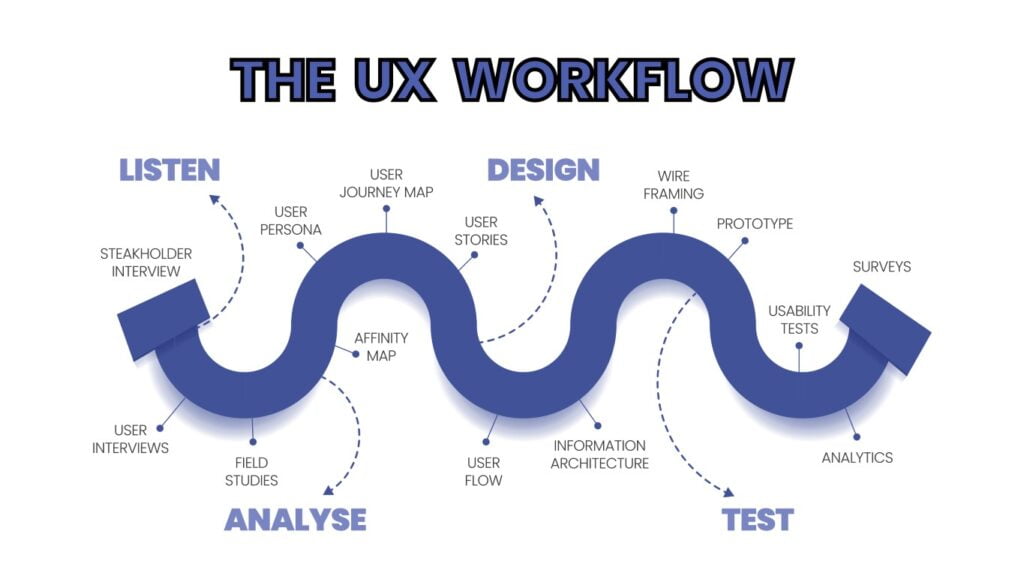Table of Contents
Storytelling Using Different Types of Content
You probably heard content marketing is one of the best things you can do for your business. And the direction you can give your visitors. Like a traffic yellow arrow. And maybe, just maybe, you’re doing content marketing but not getting any results. Is it possible content marketing isn’t for you? It’s possible content marketing isn’t working because of one simple reason: You are using digital material like marketing, or other types of content.

Fundamentals of Content
People don’t really care about the content itself; they care about how it affects them. How it makes them feel. They don’t want to read articles that explain what happens in movies. They want to experience the movie themselves (yes, I know some people actually prefer reading descriptions instead of watching movies). It’s like when our teachers told us about Africa, Australia, or Costa Rica. Until we felt it or visited the places, we really didn’t “experience” anything. It’s not the content itself people are interested in, it’s the content of how it affects us.
Content is simply a tool to use to get your message across. And content marketing is nothing but another tool for web material that makes people go “Hey! It seems like you understand me.” That means that your message is about giving perspective. Your video isn’t valuable unless it gives perspective –does anyone really care about what happened on January 1, 1983 (for example)? Not really, unless it has any relevance to them. BTW – The internet was invented on January 1st, 1983. That brings us back to our original question: How do we use content in order to get relevant and interesting stories? That’s when we remember what we know from grade school — tell stories using minimal content.
You can monetize anything, to start, figure out what you’re passionate about and if you’re really good at it, there’s some way to turn it into a business. Maybe you’re an incredible cook – start a cooking blog, then start charging for recipes. It depends on what your talents are, whatever that might be.
– Whitney Wolfe Herd, Founder & CEO, Bumble Tweet
They Want More
Content marketing is a way marketers use to tell stories or introduce their business to potential clients in order for them to get interested enough to want more information. There are lots of things that you have to consider creating different types of content. The length of your video marketing campaign and what kind of material would attract a broader type of audience. Interesting videos these days include How-To Videos where people learn new skills, funny skits that make people laugh, or even short films with messages from viewers saying how they changed their lives for the better thanks to watching the content. The type of material people engage with must be engaging and it has to look appealing. In this post, you will learn about the types of content you can use in your marketing campaign.
Storytelling Content Marketing
What many people don’t know is that storytelling and content marketing go hand-in-hand. It’s all about storytelling! People love stories; we’ve been telling them ever since we were little kids. Whether you come from Europe, The Americas, or Asia, you’ve been told stories since the day you can remember. Stories can be in the form of books, songs, jokes, poems–anything creative. When someone tells a joke or when your mom reads you a bedtime story, it doesn’t matter whether they’re a professional writer or just a person with a wild imagination–the storytelling is what makes it so engaging.
While storytelling is a personal experience, storytelling through content is a business experience. Content marketing makes storytelling a key element in a company’s digital strategy. Content storytelling for businesses presents new opportunities to reach their target audience and convert them into customers. Take that to the bank. There are many types marketers can utilize, but seven of them stand out: video production, blogging, case studies, infographics, how-to guides, and interviews.
Here Are 6 Types of Content
#1 Video Production
People love watching videos and if they are really interesting, people share them. There is no doubt that video content can be more engaging than text content and everyone knows that sharing content on social media sites like Facebook makes it go viral easily. The good thing about video content is that there are endless possibilities that fit every business niche out there. You don’t have to make a big production video, instead, you can do a simple video where you introduce yourself or your product/services as long as it’s interesting enough for people to watch.
#2 Blog and Copyright
If you want to be a creative marketer, then you have to understand the power of blogging. Blogging is preferred by many because it allows writers to create content that no one has ever seen before. It’s like writing articles, but instead of making them online, they are made into blogs.
This content type can help your business boost traffic and give you a chance to share links with your content in order for people who read blog posts or comments to visit your site.
#3 Case Studies
If you are not familiar with case studies, they are written stories about someone else’s success story or failure story and how it influenced their perspective on life or the business industry. Case studies are useful enough because through reading them people will learn what worked and what didn’t. Most users appreciate the information and make product decisions based on some of these cases.
#4 Infographics and Stats
Today, content marketers considered infographics as the most shareable content on social media. There are also lots of tools that you can use to produce content infographics, but make sure that your content is as appealing and engaging as possible.
You will be amazed to know that content marketers spend most of their time on infographics and because they are easy to understand, you won’t have a hard time spending hours trying to figure out what information is being presented. There are two ways for creative marketers to use this type of digital material. First, they can create one from scratch by themselves and then share it, or second, they can simply buy infographics already made and ready to go online.
#5 How-To Guides
This content type allows marketers to be creative and show their knowledge about a certain field. Another plus for this content type is that it helps users learn new stuff which they will appreciate once they understand how useful the information really is. These guides are not easy to create sometimes, and it takes some time to see results. You have to remember that how-to guides should be useful enough so everyone who reads your content will appreciate it no matter what the content type is.

#6 Client/Prospect Interviews
Today, design and copy marketers considered infographics as the most shareable content on social media. There are also lots of tools that you can use to produce content infographics, but make sure that your product is as appealing and engaging as possible.
Bottom Line
The content marketing world is really big and it’s wide enough for everyone. Just remember that content types vary and they should serve their purpose when your content marketing strategy becomes a success. What you basically need to do is to know what content type will work with what niche, audience, or industry so keep this in mind before creating any content for your business. With all of these tips in mind, content marketers can make anything happen as long as their goal is to reach out to potential customers now and in the future.
This is when Mariano stumbled upon deep learning, a revolutionary machine learning technique that enabled him to create powerful models that could recognize objects in images and videos. With deep learning, Mariano was able to take image recognition to the next level and develop incredible applications powered by computer vision. Today, Mariano’s passion for Computer Vision has paid off; he is now a world-renowned expert in image processing, object recognition, and deep learning. And thanks to his pioneering work, AI is revolutionizing the way we perceive and interact with the world around us.
By continuing to innovate and address new challenges, this field can make a significant impact on our lives in the years ahead. For now, researchers have only scratched the surface of what’s possible — but we can look forward to a bright future for computer vision. The possibilities are truly exciting.


